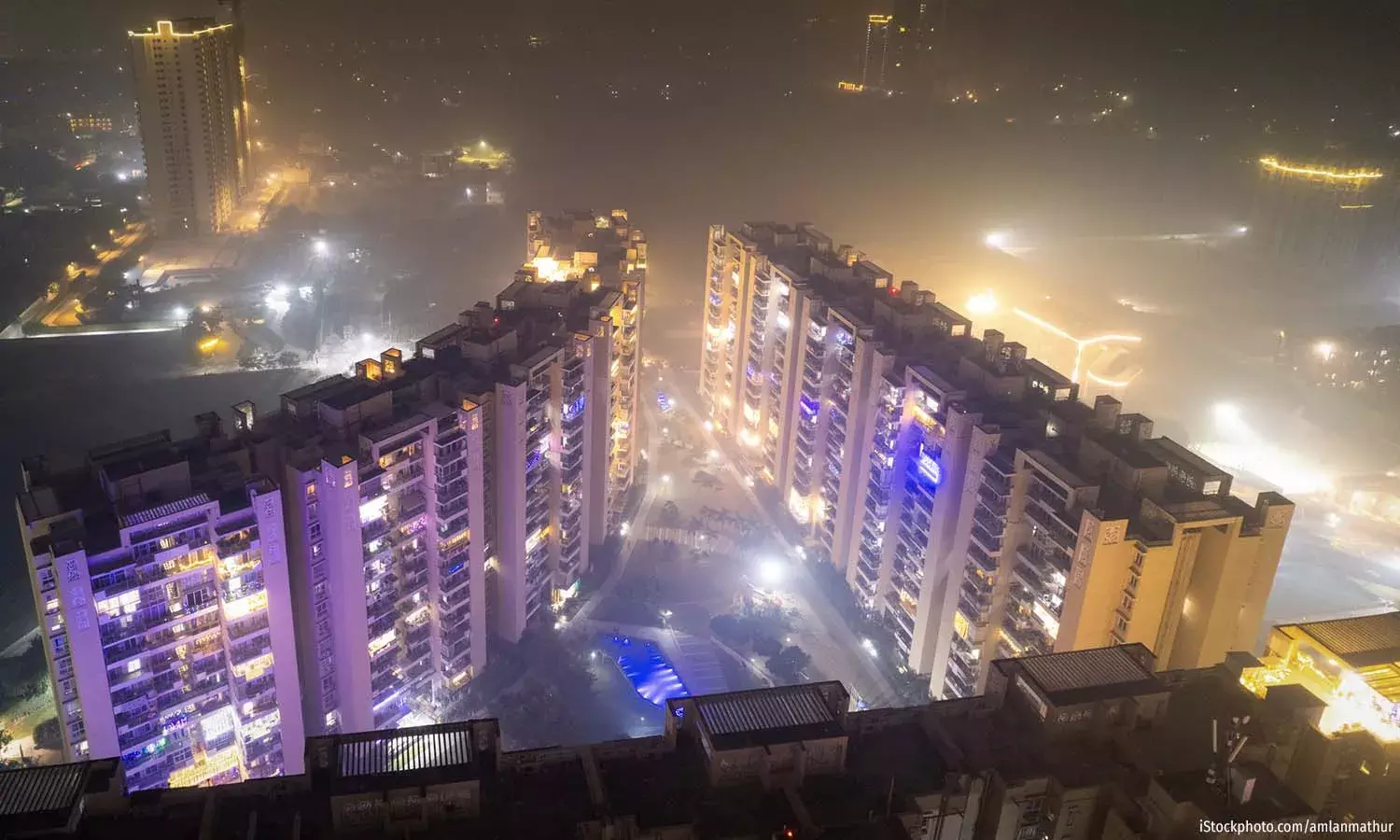Delhi's Air Quality Crisis In 5 Charts
Our data viz explores the alarming rise in particulate pollution in Delhi this month, the areas affected and the response by authorities to mitigate the situation

Mumbai: In four of the last nine days in November, Delhi experienced particulate matter concentrations exceeding the national standards by over five times, according to an IndiaSpend analysis of data across 40 monitors in the national capital. The Commission for Air Quality Management, along with the state government, has introduced measures aimed at curbing the escalating levels of particulate pollutants in the city.
The World Health Organization (WHO) designates an annual permissible limit of 5 micrograms per cubic metre (µg/m³) of air for PM 2.5 levels. However, the National Ambient Air Quality (NAAQ) Standards set a comparatively higher threshold, establishing an annual limit of 40 µg/m³ and a daily limit of 60 µg/m³.
On November 4, New Delhi's air quality monitors reported an average PM 2.5 level of 336 µg/m³. The average PM 2.5 concentration between November 1 and November 9 reached 294 µg/m³, a 15% increase compared to the same period last year, our analysis shows. Stations in North West Delhi recorded the highest levels of particulate matter pollutants during this period, on average.
Health effects of poor air quality
PM 2.5--fine particulate matter 30 times finer than human hair--can enter the bloodstream leading to severe health issues. A new study indicates a potential elevation in the risk for type 2 diabetes associated with exposure to PM 2.5.
Meeting the WHO’s air quality standards in India could potentially enhance the average lifespan of its citizens by four years, IndiaSpend reported in 2017. Other long-term health risks include impacts on fertility and the birthing process. IndiaSpend previously reported that a pregnant woman's exposure to every 10 μg/m3 increase in PM 2.5 might lead to a four-gram reduction in the baby's birth weight.
A 2021 study also found that adolescent school children breathing Delhi’s polluted air were more overweight and obese than children living in the south Indian cities of Kottayam and Mysore with cleaner air. Children in Delhi also had a high prevalence of asthma, respiratory symptoms, allergic rhinitis, and eczema that was strongly associated with a high body mass index (BMI).
North West Delhi most affected
Between November 1-9, monitoring stations in North West Delhi documented the highest levels of PM 2.5. Stations in Wazirpur, Bawana, Punjabi Bagh and Mundka have reported the highest average particulate matter concentrations during this period.
Over a third of Delhi’s schools are situated in North West, South, and South East Delhi. All three districts reported an average PM 2.5 level close to 300 µg/m³ in November, till date. Acute respiratory infections resulting from air pollution rank as the second leading cause of death among children globally, IndiaSpend reported in 2018. In response to the poor air quality, the Delhi government announced early winter break in schools until November 18.
Highest particulate pollutant levels during morning hours
On November 5, the Commission for Air Quality Management noted that the average Air Quality Index (AQI) for Delhi reached 454, surging to 463 at 3 p.m., primarily driven by persistently “unfavourable meteorological and climatic conditions”. The concentration of particulate matter pollutants exhibits a peak between 6 a.m. and 11 a.m., followed by a transient decrease, and then a subsequent rise after 3 p.m., our analysis based on the data collected from 40 Continuous Ambient Air Quality Monitoring Stations (CAAQMS) stationed across the city.
In response to the escalating air pollution crisis, the Commission for Air Quality Management in NCR and Adjoining Areas has activated an eight-point action plan in accordance with Stage-IV, tagged as “Severe +”, of the GRAP (Graded Response Action Plan) across the entire NCR, effective immediately. This comprehensive plan outlines specific measures to be executed and ensured by various agencies and Pollution Control Boards, including the DPCC (Delhi Pollution Control Committee).
The outlined steps comprise a ban on construction and demolition activities in linear public projects like highways, roads, flyovers, overbridges, power transmission, and pipelines. Additionally, NCR state governments and the Delhi government are urged to decide on allowing public, municipal, and private offices to operate at 50% strength, with the remaining staff encouraged to work from home.
Furthermore, state governments are advised to contemplate additional emergency measures such as the closure of colleges and educational institutions, as well as non-essential commercial activities. The possibility of implementing measures like running vehicles on an odd-even basis of registration numbers is also presented as part of this coordinated effort to combat the air quality crisis in the region.
On November 7, a three-judge Supreme Court bench questioned the effectiveness of the odd-even scheme proposed by the Delhi government and asked the government to submit studies that back this policy. According to the scheme, private vehicles with registration plates ending in odd numbers will be allowed on the streets on odd-numbered dates, while even-numbered vehicles can ply on even dates. In light of the crisis in the capital city, the bench has asked five state governments--Delhi, Punjab, Haryana, Uttar Pradesh and Rajasthan--to file affidavits outlining the measures taken to combat air pollution.
Drop in stubble burnings in Punjab & Haryana
Stubble burning in neighbouring states is another cause for poor air quality in Delhi. An analysis by Climate Trends has highlighted a decrease in stubble burning events in Punjab and Haryana this year. Between November 1 and 5, Punjab witnessed only about half the incidents of stubble burning compared to the same period last year, while Haryana experienced approximately two-thirds of the previous year's incidents.
We welcome feedback. Please write to respond@indiaspend.org. We reserve the right to edit responses for language and grammar.


